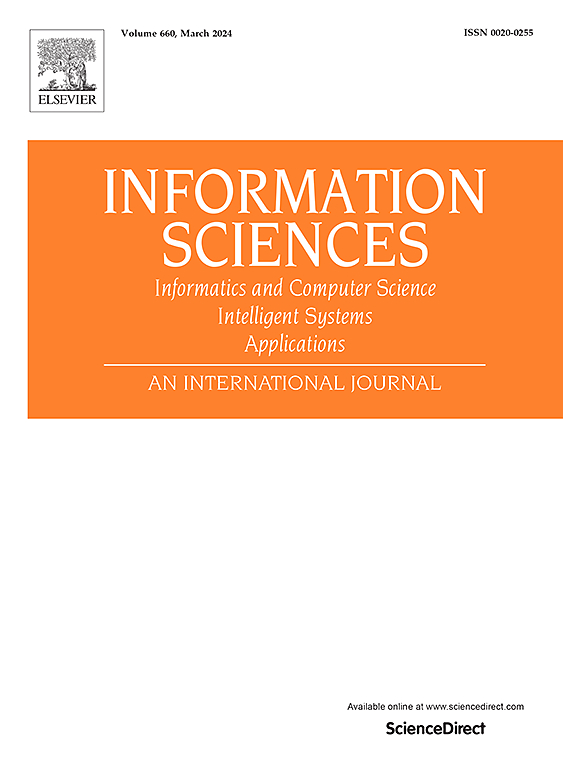基于模式交叉置换的新指标,用于捕捉复杂时间序列中的交互作用
IF 8.1
1区 计算机科学
0 COMPUTER SCIENCE, INFORMATION SYSTEMS
引用次数: 0
摘要
本文章由计算机程序翻译,如有差异,请以英文原文为准。
A new metric based on pattern cross permutation for capturing interactions in complex time series
Identifying the coupling between variables in complex systems has emerged as a central focus of numerous studies. In this paper, we proposed modified spectral pattern cross permutation coefficient for recognizing both bivariate and multivariate coupling. Firstly, we transformed time series to frequency domain using Rihaczek distribution. By reconstructing attractor and computing point-weighted change patterns, the coupling strength is measured using modified inner composition alignment. Furthermore, we extended it to multivariate case and better characterize direct interactions between target variables. The method capture the global properties of dynamical system effectively and better characterize the positive and negative coupling relationships between complex series. Simulation experiments demonstrate the method's strong performance across multiple evaluation metrics. Finally, we applied the proposed method to analyze physiological signal coupling. By analyzing the EEG signals of patients with attention deficit hyperactivity disorder (ADHD), we identified abnormal coupling patterns related to frontal and temporal lobes, as well as distinctive Beta-band activity in ADHD patients. Moreover, the metrics derived from the proposed method effectively distinguished patients from healthy controls. In conclusion, this method offers a novel approach for identifying coupling interactions in complex systems and holds promise for applications in a wide range of research fields in the future.
求助全文
通过发布文献求助,成功后即可免费获取论文全文。
去求助
来源期刊

Information Sciences
工程技术-计算机:信息系统
CiteScore
14.00
自引率
17.30%
发文量
1322
审稿时长
10.4 months
期刊介绍:
Informatics and Computer Science Intelligent Systems Applications is an esteemed international journal that focuses on publishing original and creative research findings in the field of information sciences. We also feature a limited number of timely tutorial and surveying contributions.
Our journal aims to cater to a diverse audience, including researchers, developers, managers, strategic planners, graduate students, and anyone interested in staying up-to-date with cutting-edge research in information science, knowledge engineering, and intelligent systems. While readers are expected to share a common interest in information science, they come from varying backgrounds such as engineering, mathematics, statistics, physics, computer science, cell biology, molecular biology, management science, cognitive science, neurobiology, behavioral sciences, and biochemistry.
 求助内容:
求助内容: 应助结果提醒方式:
应助结果提醒方式:


